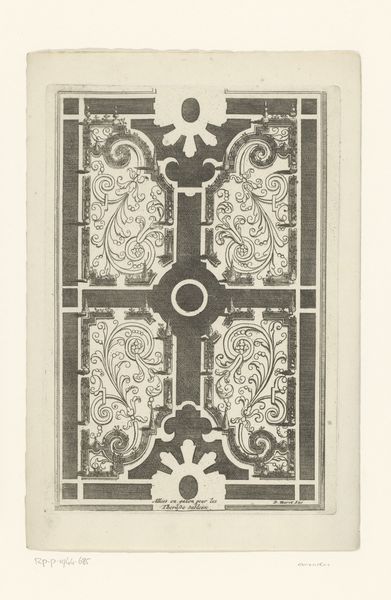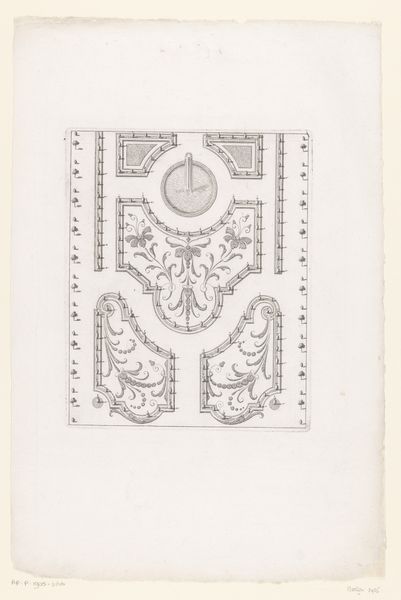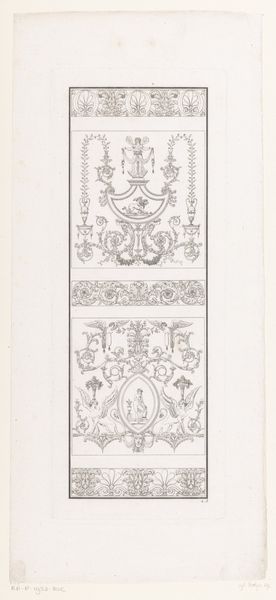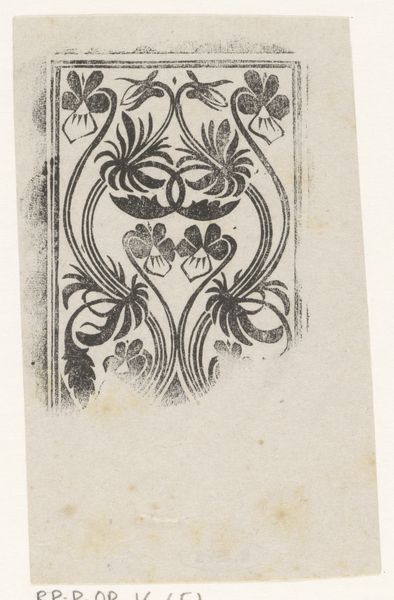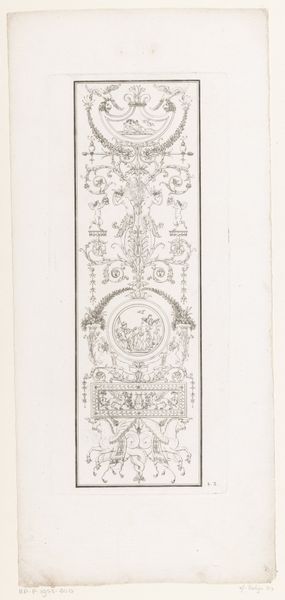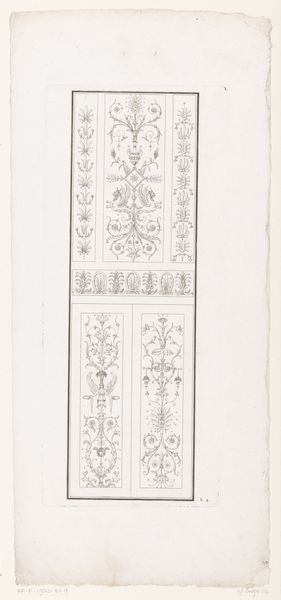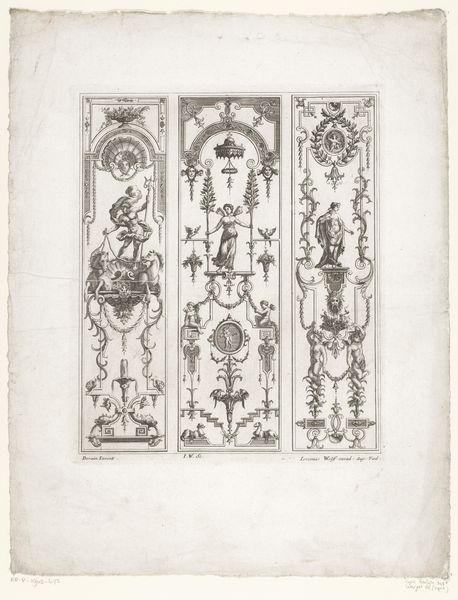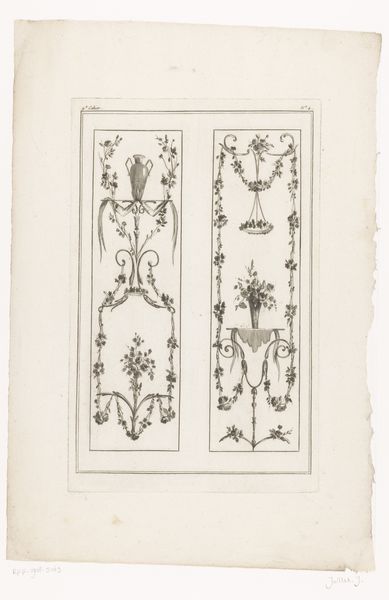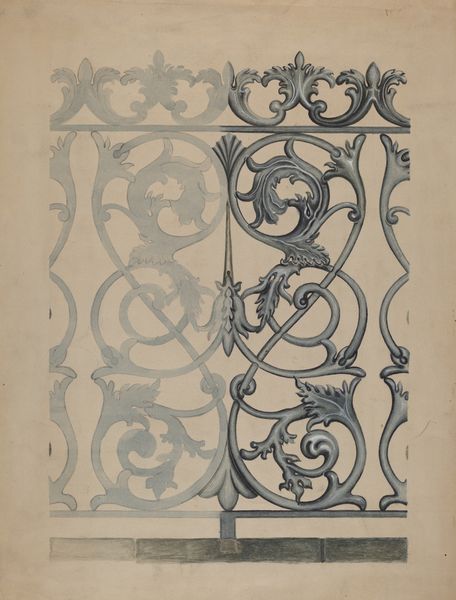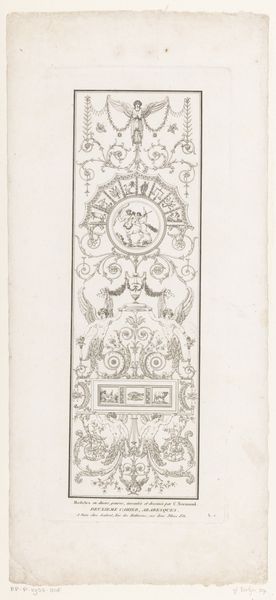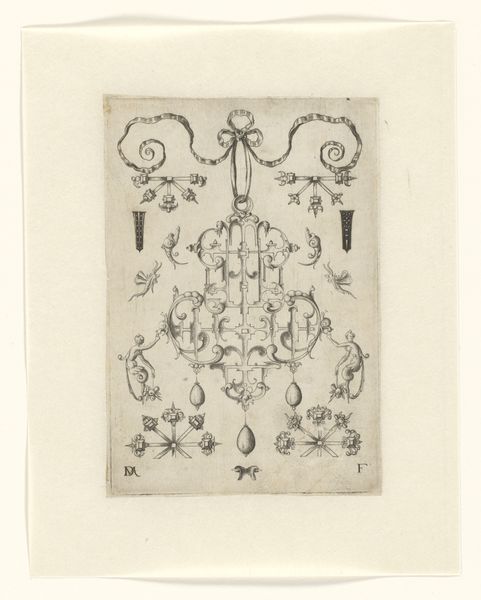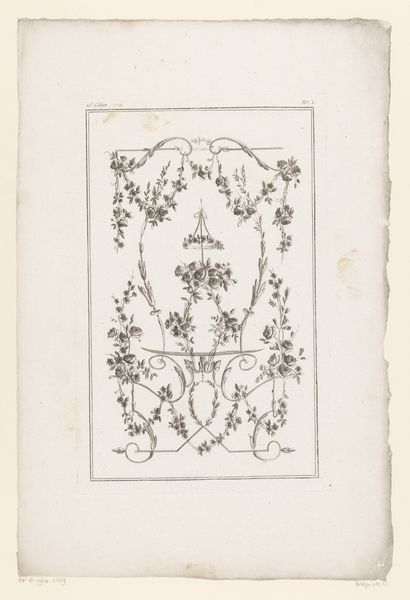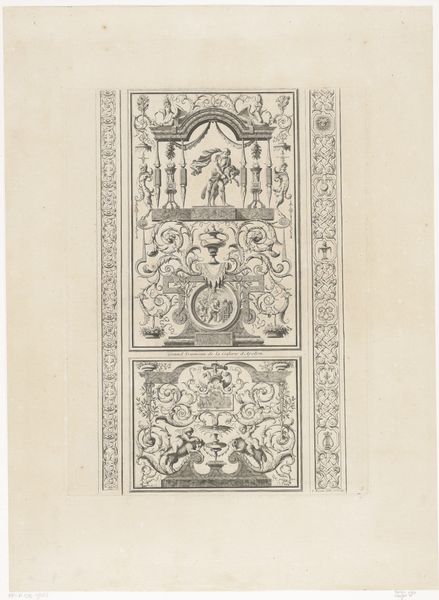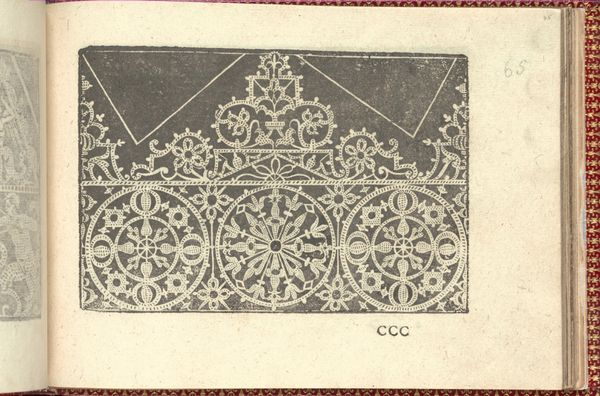
print, engraving
#
baroque
# print
#
landscape
#
geometric
#
pen-ink sketch
#
decorative-art
#
engraving
Dimensions: height 280 mm, width 244 mm
Copyright: Rijks Museum: Open Domain
Curator: I'm drawn to the stark precision of this piece. "Plattegrond van tuin met parterres," created between 1650 and 1700, is a garden plan rendered as an engraving. The cool exactitude feels almost clinical. Editor: The imagery feels theatrical to me, almost like a stage set waiting for players. There's an odd stillness that I associate with controlled artifice. What do you make of its Baroque associations? Curator: I think the connection lies in the overt manipulation of space, the emphasis on decorative forms rather than pure utility. Look at the intricate network of lines: rectangles, circles and curving tendrils interplay, revealing an almost architectural interest in geometric structure and variation. Semiotically, it’s less garden, more declaration of aesthetic intent. Editor: The organizational and ornamental aspects clearly articulate control, and wealth. The symbols denote status, luxury. Each meticulously placed topiary and statue mirrors an attempt to tame nature. There’s the suggestion of power in the imposed symmetry and how those forms echo ancient ideas of order and earthly paradise. It also reminds me a little of the set designs for courtly performances common at the time. Curator: Interesting parallel. And within that frame of ordered space we see echoes of something organic trying to escape; tendrils curl, hinting at a wildness forced into obedience. It's like a diagram of tension between the natural and the artificial. Editor: Precisely! Think, also, of what gardens meant then; enclosed worlds for both display and escapism. These geometric partitions are imbued with social narratives. The fountains would have been miniature reflections of rivers. Water symbolism links to the feminine principle. This is less an illustration of botany, more a concentrated image of civilization’s self-image at the time. Curator: Your reading amplifies the historical and cultural resonance here. For me, what stays, even with your decoding, is the formal play between light and shadow, shape and line. A tension so clear that it’s fascinating to consider how, even in an anonymous work such as this one from the holdings of the Rijksmuseum, visual analysis creates rich aesthetic insights. Editor: And yet, it also underlines how design mirrors ideology. A blueprint of privilege where beauty enforces rigid hierarchies—I'll never see a garden plan the same way.
Comments
No comments
Be the first to comment and join the conversation on the ultimate creative platform.
